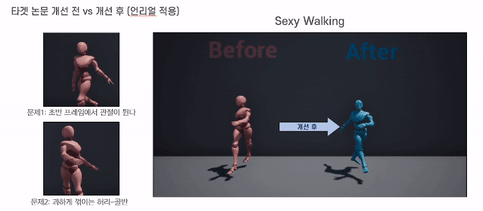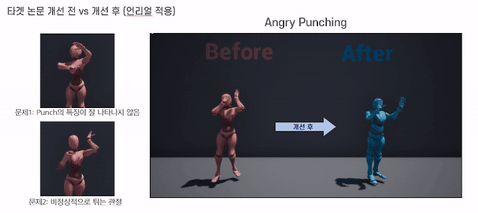Motion Style Transfer
Generating animation via stylistic motion transfer

Period: March 2, 2022 → June 16, 2022
Last Edited: February 25, 2025, 3:50 PM
Tools & Language: Unreal
State: Done
Description: Generating animation using stylistic motion transfer
Participants: 5
2022–1 Game Engineering
Responsibilities & Tasks
- Conducted target paper study
- Motion data collection (motion capture) and processing
- Responsible for project visualization
Reason for Choosing This Technology
Animation production is a resource-intensive aspect of game development.
To generate a variety of motions for multiple characters, you would typically need to create separate animations for each character state.
We sought a technique to combine an existing base animation with a new style, thus reducing the workload.
Target Paper
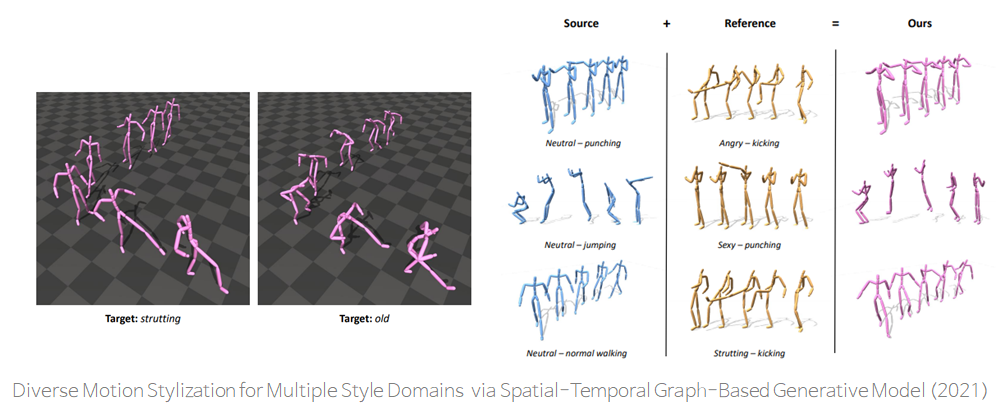
- Quickly generates new concept animations via Stylistic Motion Transfer
- Employs a Spatial-Temporal Graph-Based Generative Model for fast and precise training
- Related paper research by minari:
Paper Improvement Suggestions
Issue 1
- The paper uses AdaIN Layer, which can overlook important local style features that appear on different feature maps.
- Improvement: Introduce learnable affine parameters to the Instance Normalization calculation within the AdaIN layer, ensuring they are applied to the final output.
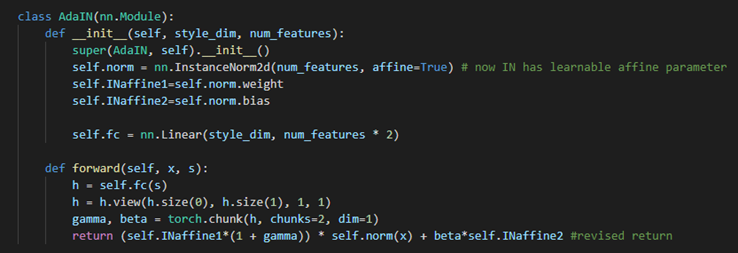
Issue 2
- During output post-processing, the root trajectory of the source motion data is used.
- If you attempt to apply a very intense style, a mismatch arises between the style and the source root’s momentum, resulting in foot skating.
- Improvement: Leverage AS-GCN (incorporating both S-links for nearby joints and A-links for distant joint relationships) to address the foot skating problem.
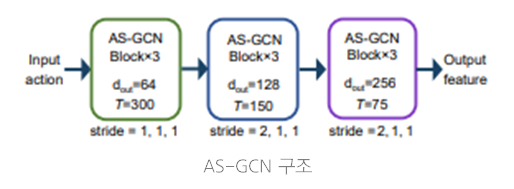
AS-GCN structure

S-links, A-links
Paper Improvement (1)
Problem
- The style transfer process uses position and rotation of the reference motion’s joints.
- However, for the root joint, the source motion’s position and rotation are used instead.
- If the reference motion is highly dynamic while the source motion is relatively static, it can lead to foot skating and unnatural motion.
Solution
- Use angular velocity (ω) and position (p) for the input motion.
- Let the generated fake motion have angular velocity (ω’) and position (p’).
- Formulate a trajectory loss using MSE:

- By constraining the motion trajectory, we avoid sudden changes that could produce abnormal movements.
Paper Improvement (2)
Problem
- In the target paper, the source motion goes through an encoder with two IN (Instance Normalization) layers, resulting in a style-normalized state before it enters the decoder.
- In the decoder, there is an AdaIN layer, which shifts the source motion’s features to the reference style features.

- The target paper shows it can handle style transfer between different content motions:

- However, when the source and reference motions differ significantly (especially for large limb movements), the paper’s method can struggle to fully separate the original style from the source motion.
- This can leave residual artifacts of the source style in the final motion, particularly in the hands or feet.
Solution
- AdaIN includes Instance Normalization (IN), which by default does not have learnable parameters.
- By adding learnable affine parameters during IN calculation in the AdaIN layer, you can more effectively reduce end-effector artifacts (e.g., hands, feet) in the final output.
Result
